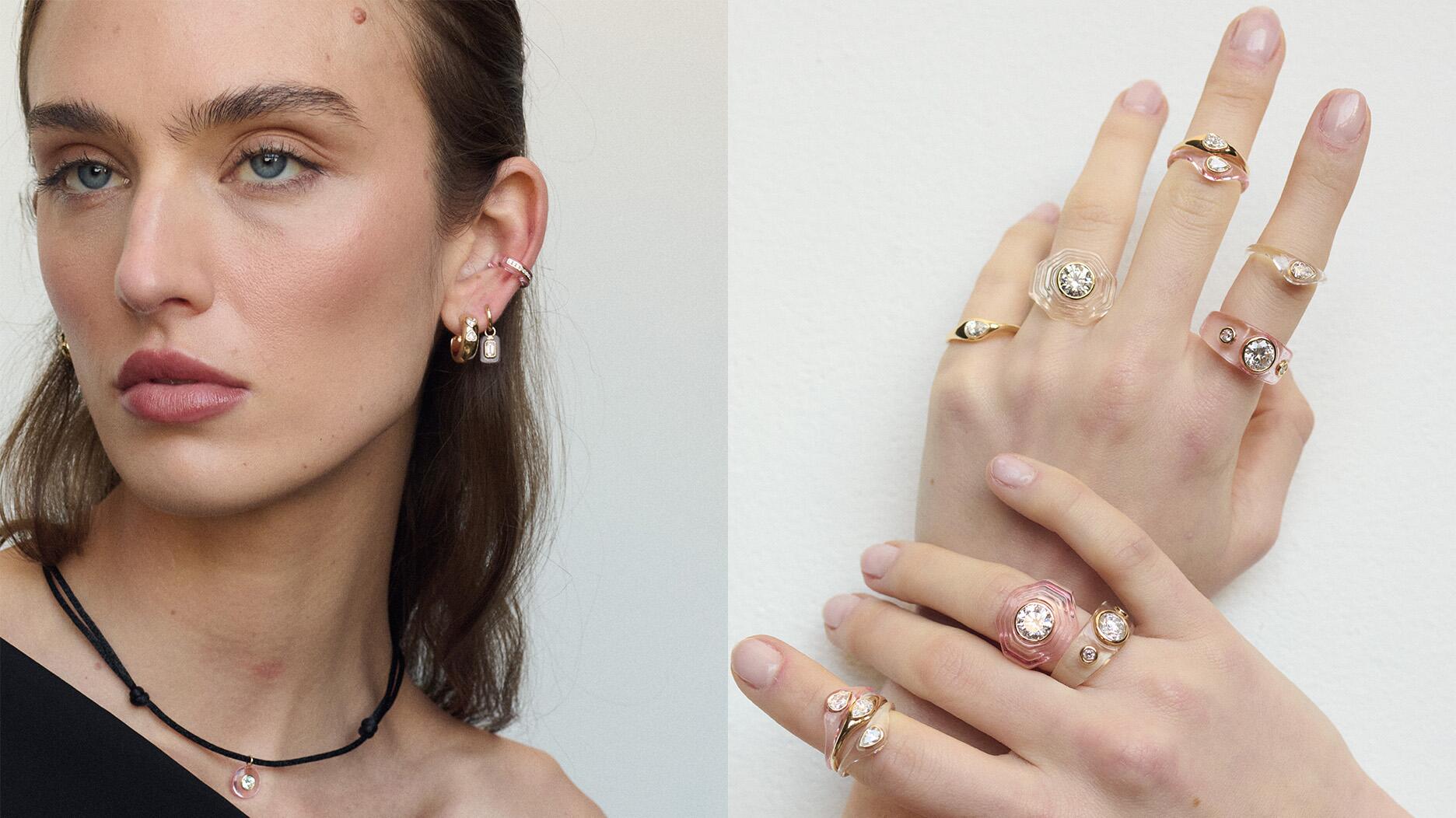Analyst: Fashion Jewelry, Industrial Uses Will Drive Lab-Grown Diamond Demand
Paul Zimnisky shared his short- and long-term outlook for the market in an updated forecast released last week.

New York-based diamond industry analyst Paul Zimnisky predicted lab-grown diamonds will constitute 12 percent of the diamond jewelry market by 2025, up from 8 percent in 2021 and 3 percent in 2018, when De Beers shook up the market with the introduction of Lightbox.
(These percentages represent lab-grown diamond value at retail as a percentage of the total polished diamond value at retail, i.e., lab-grown and natural.)
As the market for man-made diamonds grows, however, it appears to be “stratifying,” Zimnisky said, with producers adopting more specific business strategies rather than focusing on “disrupting” the natural diamond industry.
Some producers are intent on creating branded diamonds grown using more sustainable methods to differentiate their product.
Others are making diamonds for low-cost fashion jewelry, while some producers have turned their attention to growing diamonds for industrial purposes.
In the long term, the growth of the market is likely to come from this lower-cost fashion diamond jewelry—not from bridal—as well as from diamonds grown for industrial purposes, such as medical equipment, energy storage, or semiconductors.
Zimnisky points to Pandora’s “Brilliance” line, which starts at $350 and was introduced to “democratize” diamonds, and Swarovski’s proprietary colored lab-grown diamonds as examples of two major brands going the fashion route.
On the industrial side, he noted the new 10-million-carats-per-year factory the Diamond Foundry—which emerged onto the scene as a major “disruptor” of the natural diamond market—is building in Spain will focus on growing diamonds for the tech market.
Overall, the market for industrial diamonds is just a lot bigger than the market for man-made diamond jewelry, Zimnisky said, and the industrial end user cares far less whether the diamond they have is lab-grown or natural.
“With industrial applications for diamond, the lower-price option will theoretically win out as long as performance is comparable.
“With diamond jewelry, as is the case with luxury more generally, the consumer rational for purchase is not nearly as practical and is often influenced by more intuitive factors, like emotion or an affinity for rarity,” he concluded.
For the full report, visit Zimnisky’s website.
The Latest

The couple pleaded guilty to concealing at least $127 million in cash transactions at its precious metals businesses.

Consumers shared concerns about prices, inflation, tariffs, trade, and politics in the survey’s write-in response section.

In February 2026, the auction house will move its headquarters to the former Steinway Hall, a neoclassical landmark on Billionaires’ Row.

How Jewelers of America’s 20 Under 40 are leading to ensure a brighter future for the jewelry industry.

The new show will take place Jan. 23-25, 2026.


The former BHP Billiton leader and Gemfields chairman is remembered for his influential leadership throughout his 50-year mining career.

The LVMH-owned brand has partnered with the costume design union to revamp its award for 2026.

Roseco’s 704-page catalog showcases new lab-grown diamonds, findings, tools & more—available in print or interactive digital editions.

The luxury titan inked a deal to acquire an initial minority stake in the jewelry manufacturer with a pathway to full ownership by 2032.

The company’s curation of unsigned vintage and estate jewelry debuted at the Bloomingdale’s in Costa Mesa, California.

In the recent multi-shipment seizure, CBP also found counterfeit Audemars Piguet, Moncler, and Chrome Hearts items.

Helzberg’s Chief Retail Officer Mitch Maggart shared details about its tests of a new store concept rooted in an elevated luxury experience.

Jewelers of America execs and National Jeweler editors discuss tariffs, the sky-high gold price, and the engagement that broke the internet.

The luxury goods company said founder Ippolita Rostagno will remain at the brand’s helm.

Laura Burdese, who joined the Italian luxury brand in 2022, will take on the role in July.

The National Jeweler editors revisit the most noteworthy industry happenings and design trends from 2025.

Need a gift for the cat lover who has everything? Look no further than our latest Piece of the Week.

It purchased the “Grosse Pièce,” an ultra-complicated Audemars Piguet pocket watch from the ‘20s, for a record-breaking price at Sotheby’s.

Chandler got his start at Michelson Jewelers and has served as DCA president and CEO since 2001. He will retire at the end of the month.

The boutique is slated to open this week inside Terminal 8, offering pre-owned Rolex watches and more to international travelers.

Sponsored by Digital Monitoring Products

The special-edition egg pendant ingested in a New Zealand jewelry store was recovered after a six-day wait.

Associate Editor Natalie Francisco plays favorites with Piece of the Week, selecting a standout piece of jewelry from each month of 2025.

The “Love and Desire” campaign is inspired by the magic that follows when one’s heart leads the way, said the brand.

Two awardees will receive free tuition for an educational course at the Swiss lab, with flights and lodging included.

Berta de Pablos-Barbier will replace Alexander Lacik at the start of January, two months earlier than expected.

Sotheby’s held its first two jewelry sales at the Breuer building last week, and they totaled nearly $44 million.




























